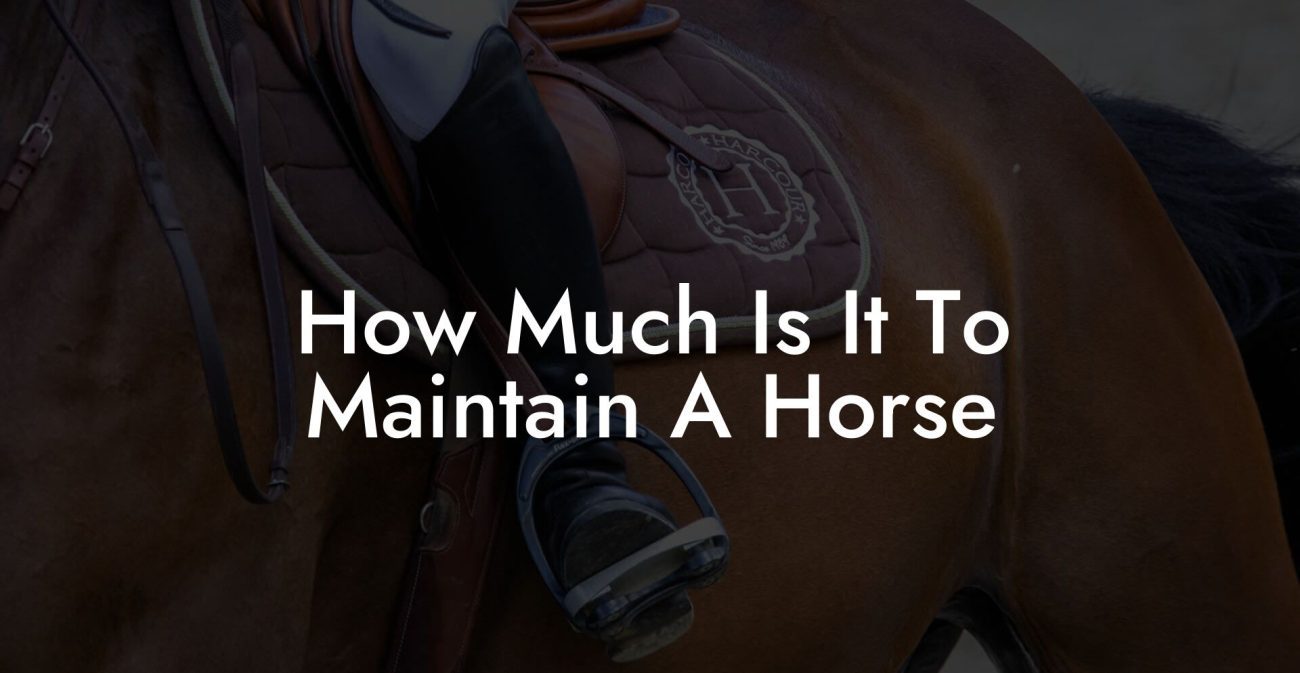There's a quirky, age-old secret in horsemanship that might just change your riding game forever: mounting a horse on the left side. It’s not just a nod to tradition, it’s backed by centuries of lore, a dash of science, and a sprinkle of practicality (with a side order of humor). If you’ve ever found yourself asking, “Why on Earth mount from the left?” then saddle up and get ready for an epic ride through history, biomechanics, and the modern world of equine care.
Quick Links to Useful Sections
- The History and Mythology of Left-Side Mounting
- Understanding Horse Physiology and Rider Safety
- Cultural and Tactical Reasons: Tradition Meets Technique
- Benefits of Mounting on the Left Side: More Than Just Tradition
- Training Your Mind and Body: The Art of Left-Side Boarding
- Step-by-Step Guide to Left-Side Mounting
- Practice Makes Perfect
- Modern Technology Meets Timeless Technique
- The Science Behind the Strategy: Biomechanics and Balance
- Debunking Myths and Challenging Conventions
- Expert Perspectives: What the Pros Say About Left-Side Mounting
- Integrating Left-Side Mounting with Modern Equestrian Practices
- Resources and Community Support: Your Next Steps
- Left-Side Mounting in the Real World: Stories from the Saddle
- Left-Side Mounting: A Lifestyle Choice for the Modern Rider
- Integrating Left-Side Mounting Into Everyday Riding Routines
- Integrative Perspectives: Why Left-Side Mounting Remains a Golden Rule
- Frequently Asked Questions About Left-Side Mounting
- Your Journey to Equine Mastery with Left-Side Mounting
The History and Mythology of Left-Side Mounting
Legend has it that medieval knights, in their quest for chivalric glory, first established the left-side mounting tradition. Imagine this: a dashing knight, poised for battle, deftly mounting his noble steed from the left. Why the left? One theory is that this method allowed knights to keep their sword arm, typically the right arm, free for combat. While modern riders might not be dueling dragons in busy city centers, the tradition of left-side boarding has endured.
Historical records, folklore, and even a few scandalous ballads hint at the advantages of left-side mounting. It’s said that the left approach was less disruptive to the horse’s natural balance, and it became a standard practice among cavalry units. Over time, this method cemented its place not only in battle but in the day-to-day world of equestrian endeavors.
The left-side mounting mythos encompasses a blend of practicality, tradition, and even a bit of superstition. Some cultures fervently believe that mounting on the left invites good luck and more harmonious relationships with your horse. Whether you’re a history buff or simply in it for the ride, the origins of this practice add an extra layer of awesome to every mounting session.
Understanding Horse Physiology and Rider Safety
When it comes to interacting with our equine friends, understanding their anatomy is key. Horses have a natural asymmetry in their muscular structure, meaning they can feel more comfortable when approached from one side over the other. Research in equine biomechanics suggests that approaching from the left side minimizes stress on the horse’s spine and muscles. In fact, many equestrians find that horses seem to relax more when they’re mounted correctly from the left.
From the rider’s perspective, mounting on the left side offers unparalleled safety benefits. By consistently using the left side, both the rider and the horse develop a familiar rhythm, a kind of unspoken communication that can reduce the risk of accidents. Modern studies in equestrian training highlight how consistency in mounting technique enhances balance, confidence, and overall rider-horse rapport.
In practical terms, mounting from the left side means you get a better read on your horse’s body language while keeping your dominant hand free to control the reins or offer gentle cues. It’s a win-win situation that has stood the test of time.
Cultural and Tactical Reasons: Tradition Meets Technique
There’s something undeniably cool about riding a practice steeped in centuries of tradition. Mounting on the left isn’t just random, it’s a ritual that connects you with riders of the past, from noble knights to rugged frontiersmen. This age-old technique is part of a larger cultural tapestry that includes everything from ceremonial parades to competitive horseback riding.
For many modern riders, embracing left-side mounting is about respect, both for the horse and for a tradition that has kept riders safe through some of the most turbulent times in history. Equestrian experts argue that this respected custom is more than a mere habit; it’s a technique that evolved based on tactical necessities. By keeping the dominant (usually right) hand free, riders were prepared for sudden movements or emergencies, a principle that holds up remarkably well even in today’s equestrian sports.
The left-side mounting method, therefore, is both cultural and tactical. It’s an homage to a bygone era and a practical technique that modern science continues to validate. You’re not just riding a horse, you’re riding a piece of living history.
Benefits of Mounting on the Left Side: More Than Just Tradition
Let’s break down the benefits of left-side mounting into bite-sized, easily digestible nuggets:
- Enhanced Safety: Consistent left-side mounting helps both rider and horse develop a better, almost telepathic, sense of their movements, reducing accidents.
- Better Communication: With your dominant hand free, you’re better equipped to give clear signals and maintain control.
- Improved Horse Comfort: Approaching from the left often aligns with the horse’s natural balance, leading to a more relaxed and cooperative partner.
- Historical Continuity: Embracing this practice connects you to centuries of equestrian tradition, adding a cool factor to every ride.
- Confidence and Consistency: Routine left-side mounting builds muscle memory, enhancing your overall riding skills and confidence.
Beyond these practical benefits, there’s a psychological edge to riding with a nod to tradition. When you mount on the left, you’re not just following rules, you’re aligning yourself with a legacy of skilled, thoughtful riders. It’s a subtle, yet powerful, reminder that sometimes the best practices are those that have quietly evolved over time.
Training Your Mind and Body: The Art of Left-Side Boarding
So, you’re convinced that mounting on the left is the way to go, but how do you perfect your technique? Begin by understanding that every ride is a learning experience. Gradually integrate left-side mounting into your routine, and soon enough, it will feel as natural as breathing.
Step-by-Step Guide to Left-Side Mounting
1. Approach with Confidence: Walk alongside your horse on the left side. Maintain steady eye contact and be calm and assertive; horses are sensitive to your energy.
2. Establish a Connection: Place a hand gently on your horse’s neck, using soothing words or a soft chuckle to relax your partner. This simple act is the bridge between you and your majestic steed.
3. Use a Mounting Block (if available): A mounting block reduces strain on the horse and helps you maintain proper posture. If you’re riding bare-back, practice carefully shifting your weight before attempting a leap onto the back.
4. Pivot with Precision: Swing your right leg over while keeping a firm grip on the reins with your left hand. Here's where the magic happens: the movement should be fluid yet deliberate, ensuring that you don’t startle your horse.
5. Settle In and Adjust: Once seated, check that your stirrups are secure and that you have balanced alignment. A minor adjustment here can yield major rewards in stability and communication during your ride.
It might sound like a lot, but once you get the hang of it, mounting from the left becomes a dance, a seamless interplay between you and your equine companion.
Practice Makes Perfect
Just like your favorite TikTok dance, mastering left-side mounting requires practice. Mix in drills with your trusted riding instructor, set aside time in your training schedule, and don’t be afraid to laugh at yourself when you bump knees with the mounting block. Each attempt builds muscle memory, enhancing your communication with your horse.
Remember, every seasoned rider was once a beginner who fumbled over stirrups and scraped knees. Your journey is uniquely yours, full of quirky mishaps and triumphant breakthroughs.
Modern Technology Meets Timeless Technique
Today’s equestrians have a treasure trove of modern tools at their disposal, from high-tech saddles that improve ergonomics to sophisticated training apps that track your progress. Yet, even in this era of innovation, the simple art of left-side mounting endures. Why? Because it represents a perfect synthesis of tradition, science, and personal connection.
Several smart devices help riders refine their technique by providing real-time feedback on posture, balance, and weight distribution. For example, wearable gadgets can notify you if you’re leaning too far forward, while smart saddles analyze pressure points to ensure your horse remains comfortable. Integrating these cutting-edge tools with the age-old practice of left-side boarding not only bolsters safety but also enriches the overall riding experience.
Embracing modern technology while honoring traditional techniques creates a dynamic equilibrium, a balance between old-school charm and new-school savvy. This blend ensures that every ride is both innovative and deeply connected to the enduring legacy of horsemanship.
The Science Behind the Strategy: Biomechanics and Balance
A deep dive into equine biomechanics reveals why mounting from the left is more than just a tradition. When you mount on the left, you minimize the risk of disturbing your horse’s natural equilibrium. Horses, by nature, tend to be more receptive to a left-side approach due to asymmetries in their muscular and skeletal design.
Studies have shown that left-side mounting helps maintain the horse’s focus, which can lead to a reduction in stress hormones, a win for both rider and horse. From an anatomical perspective, the placement of your body when mounting from the left allows for a smoother transfer of weight and preserves the horse’s natural balance. Meanwhile, you benefit from improved coordination and reduced fatigue.
These insights from veterinary science and biomechanics underscore that left-side mounting isn’t just a matter of tradition, it is rooted in empirical evidence that highlights its advantages for both equine welfare and rider performance.
Debunking Myths and Challenging Conventions
It’s time to tackle some common myths around left-side mounting. Some skeptics argue that in today’s modern world, the choice of side doesn’t matter. However, these critics often overlook the psychological, safety, and bonding benefits that come with a consistent mounting practice.
Myth #1: “It’s just a habit, no big deal.”
Reality: Habits are powerful. When a rider consistently mounts on the left, it builds a routine that reinforces good posture and balance. The psychological comfort stemming from this routine can significantly affect performance, reducing the likelihood of mishaps.
Myth #2: “Switching sides might add variety to the riding experience.”
Reality: While variety can be exciting, it can also confuse your horse. Consistency in mounting direction builds trust and understanding between you and your equine partner, making the overall experience more harmonious.
Myth #3: “Left-side mounting is outdated.”
Reality: Far from being outdated, this method marries centuries of wisdom with modern safety practices. It’s a living tradition that continues to adapt and improve as riders and trainers learn more about biomechanics and equine behavior.
By debunking these myths and embracing the practical advantages of left-side mounting, you’re setting the stage for a more balanced, confident, and enjoyable riding experience.
Expert Perspectives: What the Pros Say About Left-Side Mounting
Don’t just take our word for it, listen to some of the top equestrian experts who have dedicated their careers to studying and perfecting this practice. Many professional riders and trainers emphasize that left-side mounting is not only a safety measure but also a cornerstone of effective communication with your horse.
Veteran trainer Alexa Monroe remarks, “When you consistently mount on the left, you’re sending a clear message to your horse. It’s a silent cue that builds trust and creates a harmonious dynamic between rider and animal.”
Similarly, renowned equine physiotherapist Dr. Rafael Cruz highlights the scientific merits: “Biomechanical studies confirm that the left-side approach is optimal, as it aligns closely with the natural movement patterns of horses. This alignment reduces unnecessary strain on their muscles and spine, thereby preventing injuries.”
These expert insights bolster the case for left-side mounting, illustrating that it’s a practice built on both tradition and solid scientific research. Whether you’re training for competitive events or simply enjoying leisurely rides, switching to left-side mounting could be one of the best decisions you ever make.
Integrating Left-Side Mounting with Modern Equestrian Practices
In the age of digital innovation, equestrian practices have evolved to include apps, wearable tech, and online communities dedicated to improving riding techniques. Integrating left-side mounting into your modern routine can be both fun and educational.
Many riders now track their mounting and dismounting consistency using smartphone apps that record your posture, time taken, and even the subtle shifts in your horse’s behavior. These digital tools provide valuable feedback and help you make gradual improvements. They also allow you to share your progress on social media, engaging with a vibrant community of fellow riders who pride themselves on mastering this time-honored tradition.
If you’re the kind who loves a side-by-side chat about riding hacks, joining online forums or local equestrian groups can allow you to swap stories, troubleshoot issues, and celebrate small victories. After all, every successful ride starts with a community of enthusiasts who understand that mastering a skill like left-side mounting is both an art and a science.
Resources and Community Support: Your Next Steps
Whether you're a curious beginner or a seasoned rider looking to fine-tune your technique, there’s a wealth of resources available to support your journey. Online tutorials, interactive webinars, and local riding clubs can provide hands-on experience and expert guidance on perfecting left-side mounting.
One of the first steps in your journey is to connect with local equine centers that offer clinics and workshops specifically focused on traditional mounting techniques. These sessions often blend modern training methods with the rich tapestry of equestrian heritage, giving you practical tips paired with historical context.
In addition, tapping into online communities on platforms like Instagram, TikTok, or specialized equestrian forums can be immensely beneficial. Engage with influencers who share their left-side mounting routines, watch tutorial videos, and even ask questions in live Q&A sessions. Modern riders are embracing digital tools to refine techniques that have been trusted for centuries.
Blogs, podcasts, and online courses are also fantastic resources for deepening your understanding of why the left side is crucial, not just for safety and balance, but as a ritual that enhances the emotional bond between you and your horse. Read success stories, watch demonstration videos, and don’t shy away from asking questions within these supportive communities.
Remember, every great rider started with a single, sometimes clumsy, mounting. Your progression is part of a larger narrative steeped in tradition, innovation, and community. So, take advantage of the support networks around you, and let each new lesson bring you closer to riding mastery.
Left-Side Mounting in the Real World: Stories from the Saddle
Personal experiences bring all these technical points to life. Consider the story of Jordan, a young urban rider who initially struggled with confidence during park rides. After switching to a consistent left-side mounting routine, Jordan found that their horse responded with unexpected grace and calm. “It was like we were in sync,” Jordan recalls with a smile. “I felt more connected and in tune with my horse, and it transformed every ride into a mini-adventure.”
Then there’s Mia, an adventurous millennial who documented her journey on social media. Despite a few humorous mishaps, like a near miss with a brush against a fence, Mia’s commitment to the traditional left-side approach not only improved her technique but also earned her a dedicated online following. Her posts remind us that even in moments of chaos, sticking to a proven method can yield the most rewarding, and often laugh-out-loud, experiences.
And let’s not forget the veteran equestrian Sam, who has ridden for decades. Sam’s steadfast belief in the left-side mounting tradition has made their training sessions a masterclass in discipline and respect. “It's like a secret language between me and my horse,” Sam enthuses. Their story is a testament to the enduring power of consistency, and a reminder that sometimes, time-tested techniques hold the key to modern success.
These stories, from the urban jungles to the rustic countryside, echo the same message: left-side mounting is more than a rule; it’s a lifestyle that enhances safety, builds trust, and turns riding into an art form.
Left-Side Mounting: A Lifestyle Choice for the Modern Rider
Embracing left-side mounting means more than just adopting a new style of getting on your horse, it’s a lifestyle choice that resonates with the modern rider. Gen-Z and millennial equestrians are drawn to practices that combine authenticity with innovation, and left-side mounting sits right at that intersection.
This method embodies the spirit of being true to the roots while adapting to contemporary needs. It’s about blending the old-school wisdom passed down by countless riders with modern insights and technological advancements. The ritual provides a sense of structure, discipline, and connection that many find missing in the fast-paced, digital age.
By adopting this method, you’re joining a global community that values tradition, safety, and creativity, a community that isn’t afraid to have a little fun along the way. The journey of mastering left-side mounting is one of self-improvement, mindfulness, and in the end, a deeper understanding of the symbiotic relationship between human and horse.
Integrating Left-Side Mounting Into Everyday Riding Routines
Consistency is key to mastering any skill, and left-side mounting is no different. Integrate this practice into your everyday riding routines, whether you’re heading out for a quick trail ride, preparing for a competitive event, or engaging in relaxed leisure riding. Each ride is an opportunity to reinforce good habits, build trust, and even make a few playful memories along the way.
For beginners, start by dedicating a few training sessions solely to practicing the mounting process. Focus on your approach, the gentle swing of your leg, and smooth transition into the saddle. Don’t worry if you fumble or laugh at yourself along the way, every rider has their own “oops” moments, and those are all part of the learning curve.
Over time, as you refine your technique, you’ll notice subtle improvements in your balance, posture, and overall riding ease. Your horse, ever the discerning partner, will respond with less resistance, more engagement, and perhaps even a twinkle of approval in its eye. These are the small victories that add up to long-term success.
As with any skill, progress comes in waves, sometimes fast, sometimes slow, but each session contributes to a deeper, more intuitive understanding of your horse’s rhythm. And who knows? With enough practice, you might find that left-side mounting becomes your favorite part of every ride.
Integrative Perspectives: Why Left-Side Mounting Remains a Golden Rule
Integrating the wisdom of the past with the demands of modern riding, left-side mounting remains a golden rule for a host of reasons. It unites the practical with the philosophical, the scientific with the traditional, and the individual with the community.
Whether you're drawn to the historical narrative, the biomechanical benefits, or the sheer elegance of the technique, there’s no denying that left-side mounting offers a multi-dimensional approach to horsemanship. It’s a practice that not only prioritizes safety and stability but also fosters an environment of mutual respect, trust, and even a bit of rebellious charm.
For today’s riders, who cherish authenticity and seek meaning in every activity, left-side mounting isn’t just a procedure, it’s a lifestyle emblem that connects them to a lineage of equestrians who understood that sometimes, the simplest solutions are the best.
Frequently Asked Questions About Left-Side Mounting
Here are some frequently asked questions to clear up any lingering doubts about why mounting on the left side is still the go-to method for riders around the world:
1. Why is it important to mount a horse on the left side?
Mounting on the left side not only aligns with centuries of equestrian tradition but also enhances safety by keeping the dominant hand free for controlling the reins and allowing a smoother transfer of your weight onto the horse.
2. Does left-side mounting really make a difference in horse behavior?
Yes, many riders notice that horses tend to remain calmer and more balanced when mounted consistently from the left, due in part to the alignment with their natural biomechanics.
3. How does left-side mounting improve rider safety?
By mounting from the left, you ensure that your dominant hand remains free to guide and control your horse. This technique minimizes sudden movements and reduces the risk of accidents.
4. Is the tradition of left-side mounting based on scientific evidence?
Absolutely. Studies in equine biomechanics suggest that mounting on the left aligns more closely with a horse’s natural structure, reducing muscle strain and optimizing balance.
5. Can I switch between left and right side mounting?
While it may be tempting to alternate for variety, consistency is key. Regular left-side mounting helps build a reliable routine that benefits both your safety and your horse’s comfort.
6. What should I do if my horse resists left-side mounting?
If your horse seems hesitant, slow down the process. Use calm reassurance, gentle handling, and consider seeking advice from a seasoned trainer. Practice makes perfect, and building trust takes time.
7. How can technology help me improve my left-side mounting?
Modern tools such as smart saddles, wearable devices, and training apps can provide real-time feedback on your posture and balance, helping you refine your technique while adhering to time-tested practices.
8. Is left-side mounting universally applicable across all riding disciplines?
Yes, whether you’re into western riding, dressage, show jumping, or trail riding, left-side mounting has been a reliable tradition that supports safety and communication in nearly every equestrian discipline.
Your Journey to Equine Mastery with Left-Side Mounting
Embracing left-side mounting is embracing a lifestyle that merges practical riding skills with a deep sense of historical continuity and innovation. It’s a practice that promotes safety, builds trust, and transforms the ordinary ride into an extraordinary connection between you and your horse.
Every time you approach your horse’s left side, you’re not just following a rule, you’re participating in a time-honored tradition that has evolved over centuries. You’re joining a community of riders who value authenticity, safety, and the sheer joy of horsemanship.
So, whether you’re just starting out or are a seasoned rider looking to refine your technique, remember that the left side isn’t just a side, it’s THE side. Let your boot heel tap the ground with confidence, your heart beat in sync with your horse’s gallop, and your spirit revel in the timeless dance that is left-side mounting.
Your journey towards becoming an even more attuned equestrian starts here. Embrace the quirks, master the technique, and let every ride become a story worth sharing. The legacy of left-side mounting is in your hands, and gallops with you every step of the ride.













